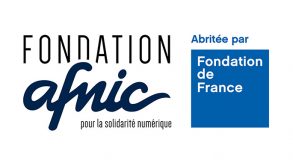In a world where commercial performance, customer trust and system resilience are all heavily influenced, not to say determined, by online presence, brands are rethinking their digital architecture. Having a custom top-level domain – a “dotBrand” or brand gTLD such as .leclerc, .microsoft, .bnpparibas, etc. – is increasingly seen as a strategic decision, and not just a simple technical or marketing move.
A proprietary asset giving complete digital autonomy
Unlike the standard TLDs such as .com, .shop, etc., a dotBrand or brand TLD gives the business complete control over its own domain. The owner of the dotBrand is at once the registry, the operator and the authority for the names in its domain. Whether in terms of creating names, managing or securing them, the business has total control of the entire chain.
This proprietary model generates a return on investment (ROI) which takes various forms, in both economic and strategic terms.
ROI: the main value levers of a dotBrand
1. Savings on the purchase of generic names in the secondary market
Each year, businesses spend tens if not hundreds of thousands of euros on buying up strategic domain names that have already been registered by third parties. With a dotBrand, they can immediately create catchy, short names such as:
• sales.yourbrand
• app.yourbrand
• support.yourbrand
• group.yourbrand
The money saved by not having to buy these domain names is alone equivalent to several years’ worth of a registry’s operational costs.
By way of example, Expedia paid $11 million in 2022 for the domain name hotel.com.
2. Elimination of intermediaries: the end of the “middleman”
In the traditional model, domain names are managed via registrars, which in turn depend on registries. With a dotBrand, the brand itself is its own registry. That means fewer intermediaries and therefore:
• Lower recurring management and renewal costs.
• Fewer risks of errors and of conflicts with external providers.
• Fewer risks of “social engineering” attacks such as phishing expeditions targeting contacts at intermediaries, and therefore fewer risks of potential security failings, leading for example to unauthorised transfers, etc.
Cutting out the middlemen leads to greater operational agility, while at the same time reducing contractual, technical and security risks.
So by becoming its own operator, the business simplifies its digital governance and permanently reduces its operational costs.
3. Benefits of tougher resilience
One characteristic of the dotBrand that is often undervalued is its ability to bolster the resilience of the brand’s digital ecosystem. Thanks to escrow and Emergency Back-End Registry Operator (EBERO) mechanisms, it is possible to restore the entire DNS infrastructure in just a few hours in the event of a major failing. This degree of continuity cannot be achieved with traditional models, and the costs avoided by the dotBrand model in the event of failure (site inaccessibility, interrupted campaigns, blocked transactions, reputational harm) can amount to thousands or even millions of euros depending on the sector and the impact on the brand’s reputation.
4. More trust, less fraud
By assigning its own domain names, the brand substantially reduces:
• phishing expeditions, identity theft;
• cybersquatting and the use of deceptively similar names;
• and therefore the cost of combating abuse.
Users know that any domain ending in .brand is authentic, and this increases customer trust, especially in sensitive sectors such as banking, health care and e-commerce. 80% of respondents to our perception survey on brand TLDs* said a dotBrand address gave them greater confidence than generic ones.
5. Optimised marketing, centralised management
Having a dotBrand allows businesses to organise and name their digital assets clearly, logically and consistently (e.g. product.yourbrand, customerspace.yourbrand, event.yourbrand). This structure also leads to improvements in:
• SEO (search engine optimisation);
• memorability;
• the consistency of marketing campaigns.
In-house teams can create or delete names in real time, thus improving time-to-market, the Holy Grail for marketing managers.
Investing in a dotBrand means buying autonomy, security and operating margin
Obtaining and operating a dotBrand should be seen not as a cost centre but as a strategic lever. By cutting out middlemen, reducing risks and achieving considerable savings on domain names, security and processes, a brand TLD becomes a proprietary digital asset.
In the context of ever-faster digital transformation, this degree of autonomy, which today is still relatively rare, will be tomorrow’s expected standard. Businesses that have managed to make early use of this competitive advantage will have built up a technological and reputational stock that will prove difficult to catch up with.
To round out our remarks, we have performed a simplified ROI calculation for a dotBrand project over a five-year period. This calculation highlights the direct and indirect savings compared with the total costs of the project.
ROI – Brand TLD
Horizon: 5 years
Assumption: major brand, active internationally, with an extensive portfolio of domain names
Project costs over five years
| Cost item | Estimated amount (€) | Details |
| ICANN application fees (one shot) | 225,000 | One-off amount during the ICANN application stage |
| Expert support/consultancy (one shot) | 30,000 | Application preparation, advice |
| Deployment & initial integration (one shot) | 40,000 | Configuration and deployment of infrastructure and management tools |
| Annual operating costs | 50,000 x 5 = 250,000 | Back-end registry operator, escrow, ICANN fees, sole registrar, compliance |
| Total project over five years | €545,000 |
Quantifiable savings and gains over five years
| Savings or gain item | Estimated amount (€) | Details |
| Secondary market purchases avoided | 200,000 | Assumption: 5 strategic generic names at €40,000 each |
| Reduction of management costs | 50,000 | Annual costs saved on management of the portfolio of domain names |
| Savings associated with the reduction in phishing / cybersquatting | 50,000 | Legal costs and reputational damage avoided |
| Reduction of the risk of critical breakdown | 200,000 | Assumption: one slight incident avoided during the five years |
| Shorter time-to-market, value of marketing/branding | 100,000 | Estimated value of the gains in consistency, SEO and time-to-market |
| Total estimated gains over five years | €600,000 |
Net profit & performance indicators
| Indicator | Value |
| Total investment | €545,000 |
| Total gains estimated | €600,000 |
| Net ROI over 5 years | +€55,000 |
| Gross profitability | ~110% |
| Break-even | Between years 3 and 4 |
Note: (values not quantified here but with substantial impact)
- Image and differentiation on international markets
- Strategic digital autonomy
- Marketing agility
- Cyber-security
- Ability to recover direct traffic (e.g. instinctive navigation with .brand)



